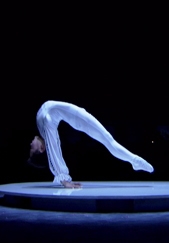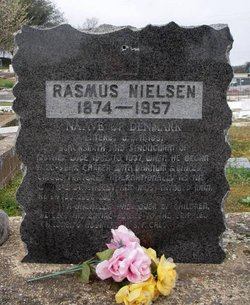Wikipedia tells us: Shamanism is an anthropological term referencing a range of beliefs
and practices regarding communication with the spiritual world. There is a lot
of research done by anthropologists and religious historians like Mircea Eliade
that explores this line of thought. Daniel Pinchbeck defines Shamanism as “A
technology for exploring non-ordinary states of consciousness in order to
accomplish specific purposes: healing, divination, and communication with the
spirit realm.”
Personally I
don’t believe there is any need to postulate a spiritual world as a separate
realm of existence to explain phenomena in this world. I believe the answers to
our questions and mysteries lies firmly rooted in reality. Explanations given
along supernatural lines only complicates things and raises more questions then
it answers. In my writings I am treating the shaman as a guide for an
exploration of non-ordinary states of consciousness or an altered experience of
reality. Lessons learnt in this state of mind does not teach us about the
spirit world but about ourselves and our place in the real world.
I believe the
shamanistic tradition and experience has been important for humans for the same
reasons as religion. The beneficial traits of these traditions has worked to
strengthen unity, binding communities, finding meaning in complex things by
providing answers to unexplainable things, and it exists throughout the world,
most likely because it’s positive effects are real, regardless of the ultimate
veracity of the teachings. I will get back to these underlying positive effect
in another post.
Blogger Tai Carmen describes the shamanistic state eloquently in a great post on her blog:
“A systematized disorganization of the senses via trance states induced by
intoxicants/hallucinogenics, music and/or dance, with the goal of personal
transformation/liberation from social constraints, and communion with a divine
or supernatural principal. ”
The tools of
the trade seems to be drums, chanting, and also demonstrations of supernatural
skill. All employed to bring the participants a state of ecstasy. A word whose
original meaning came from the Greek word Ekstasis, which means ‘standing
outside oneself.’ He who stands outside himself would be able to see himself
from the outside.
The mindset
of the participants is described as a trance, but perhaps for those that can’t
or won’t reach the full ecstatic state themselves watches the shaman as a
representation of themselves. They watch the shaman as they watch themselves.
He becomes man’s representative, the symbolic human.
A Showman Shows Man - Man. For a Showman, the altered state is the mindset of the Crowd.
Their minds connected watching time slowed down and controlled by the Showman
as he draws them into a symbolic reality, and leads them into Ekstasis in its
original meaning, standing outside oneself to be able to watch and understand
oneself.
Shamans are
keepers of secret knowledge, they explain unexplainable events and increase the
odds of survival and the moral in the group. They are the mediators between the
spiritual or altered experience of reality and the real world. In this symbolic
world order they find hope of control over stochastic processes in the real
world.
The shaman manifests our dreams and collective imagination. They give
hope. Hope of healing, hope of direction when lost and so on. Through his role
as an outsider, a wounded healer, someone who has suffered and learnt, one who have
gone out on the ice and lived there alone for many months until he could
finally hear the voice of the Universe, have certain obligations to fulfil.
 |
| From BBC's Human Planet |
From the TV series Human Planet I learnt that on coral islands where it
is possible to fish within a lagoon as well as out on the open sea, fishermen
are more superstitious about fishing out at sea. This means there are more
rituals connected to the open sea variant. This is because added risks. Random
uncontrollable processes like bad weather and dangerous prey increase risk of
injury and death. The open ocean is a treacherous place and the beasts pulled
up can be dangerous. The more random the process, the easier it is for us to
become superstitious. Situations of gravity, such as open-sea fishing, or big
game hunting would all bring on a desire to control the outcome, to gain an
advantage and security in a very uncertain situation.
 |
| BF Skinners superstitious pigeon |
In risky circumstances
where randomness is unavoidable normal pattern recognition no longer suffice
and as demonstrated nicely by B.F. Skinners famous superstitious pigeons, our
minds makes sense of unrelated events and outcomes. The pigeons belived that
their actions such as wing flapping and turning was an important part of
receiving food. The fact was that the food was delivered completely at random
with no reference to the pigeon’s actions. When food was delivered the pigeon
remembered its last actions and attributed it to the food delivery. And hence
persisted to repeat the half turn, the wing flap and so forth it had done
immediately before the food arrived. The pigeons quickly developed a set of
beliefs to make sense of the randomness.
Minds were made to make sense of things and it is so eager to do so it
often makes sense out of things that have no sense at all. Mistaking events
following each other in time for causality, that the first event is linked to
the next. Like linking a successful and injury free hunt to correctly following
a groups rituals. If the ritual was executed and the ensuing hunt was
successful and injury free it would be attributed to the ritual. The tribe now
have ‘proof’ that the ritual worked. Once this thought pattern occurs it can be
very difficult to escape. To the point that if someone did die in the hunt, the
question would not be whether the whole system was wrong, but what alterations
must be done to the ritual, which bit was not done well enough, which part of
it failed. In this way a simple superstition can become a complex set of
instructions meaningful within the community’s belief system.
 |
| Minds makes sense of things that have no sense at all. |
Superstition aside, as I mentionioned earlier the veracity of the
beliefs seems to be unimportant. The benefits from following religious
practices and rituals are all equally helpful. We have yet to find one type of
prayer that gives 100% return of your prayers. All rituals and spiritual
traditions has similar outcomes so the important thing about them is that
something about them ‘works’ for us as humans.
The shamanistic ritual before the hunt becomes a time for focus and for
unification of the hunters and through them the whole tribe. It changes the
mindsets from I to We and in that there is immense power. We are social beings,
together we are invincible, together we will prevail, and together we shall
grow. This is the obligation of the Shaman Showman.

























